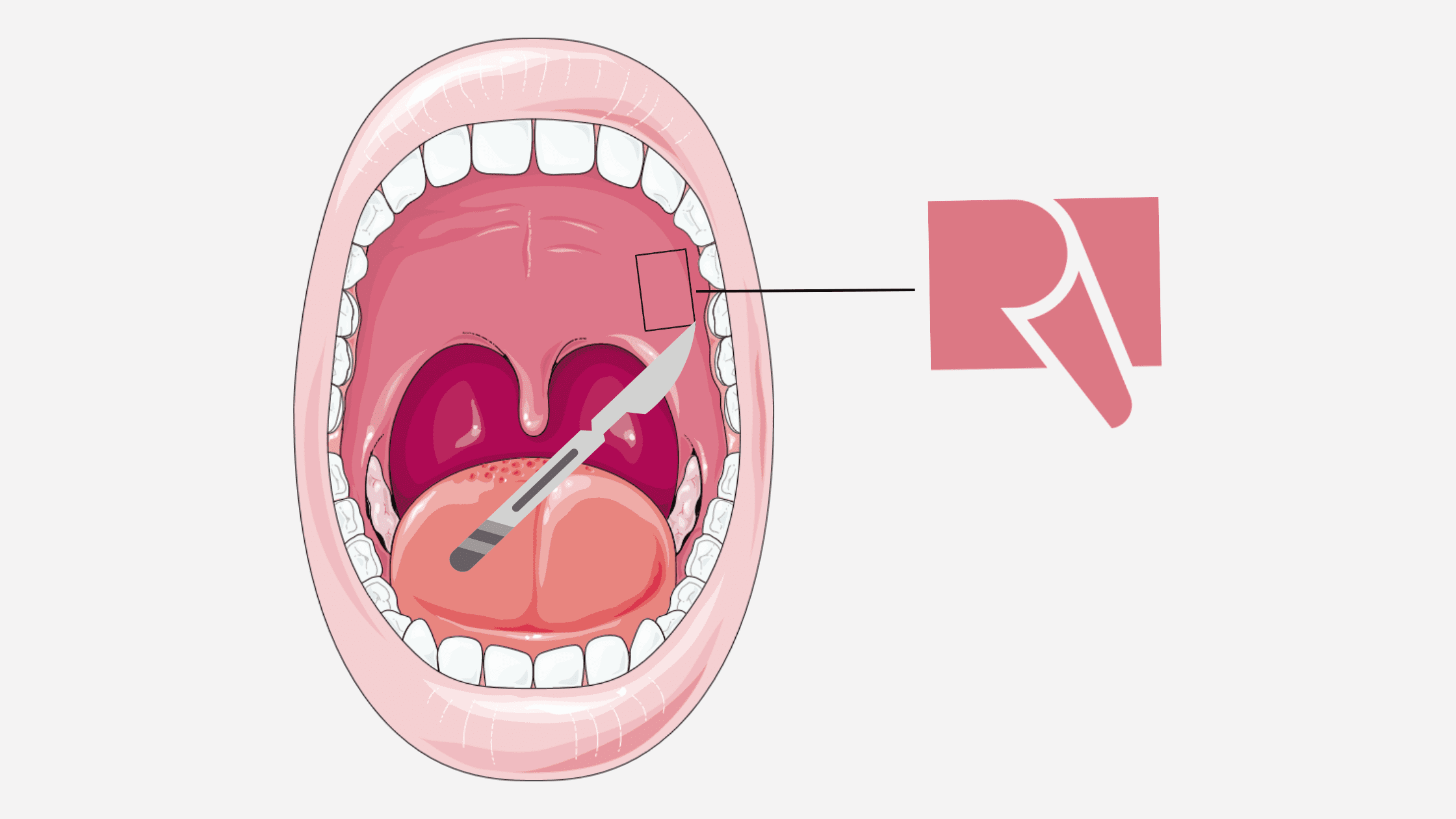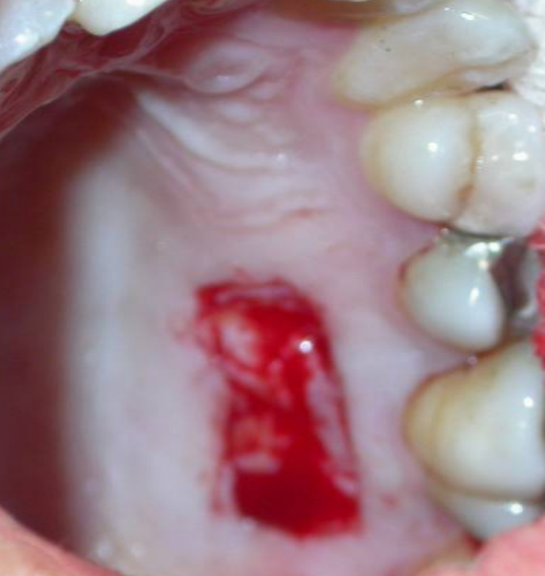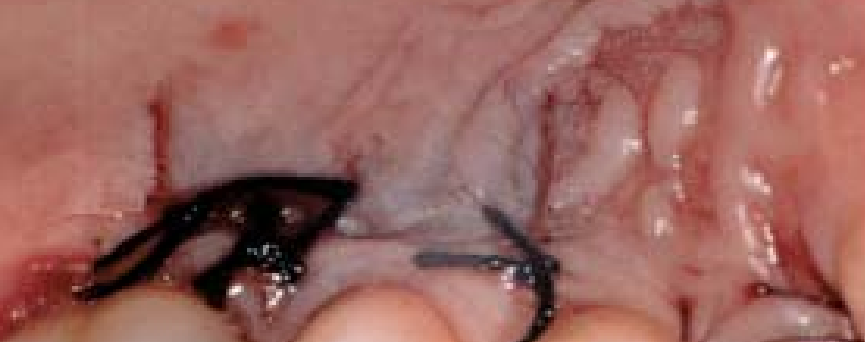Roof of the mouth after a gum graft: What to expect?
 If you have receding gums, you may benefit from a gum grafting procedure that can restore your gum health and protect your teeth.
If you have receding gums, you may benefit from a gum grafting procedure that can restore your gum health and protect your teeth.
One of the most common and effective types of gum grafting involves taking a small piece of tissue from the roof of your mouth (or palate) to cover the exposed root surfaces of your teeth.
This not only improves the appearance of your smile but also strengthens your gums and prevents further damage.
The good part is that the graft is taken from your own body, resulting in reliable and predictable results.
You may wonder how this procedure can impact the roof of your mouth and what kind of recovery process you can expect.
In this article, we will explain what happens to the palate after a gum graft and how you can take care of it to ensure an optimal and smooth recovery.
In this article:
1. What does the palate look like after a gum graft?
2. The first changes in the roof of the mouth after a gum graft
3. How long will it take for the roof of the mouth to return to its normal appearance?
4. How to promote and speed up the healing of the palate?
5. Potential complications at the roof of the mouth after a gum graft:
What does the palate look like after a gum graft?
When it comes to gum graft procedures, there are two techniques that involve taking the graft from the roof of your mouth (the donor site): the free gingival graft and the connective tissue graft.In a free gingival graft, the outer skin layer of the palate is completely removed during surgery. As a result, the wound left behind is larger and more exposed. This technique may cause more discomfort and generally requires a longer healing time. (1)

A connective tissue graft only cuts off the bottom layer of skin from the roof of your mouth. The top layer stays there and covers the wound. This makes the wound smaller and less painful. It also heals faster and better. (1)

But don't worry, the discomfort is not permanent and can be controlled. Whatever the technique, the roof of the mouth will fully heal in a few weeks.
The first changes in the roof of the mouth after a gum graft
After a gum graft, the area where the graft was placed heals quickly within the first week, with minimal postoperative effects. However, discomfort in the roof of your mouth may last a bit longer. Don't worry, though, as these reactions are completely normal and temporary, gradually fading as you heal.Here's what to expect in the first few days after a gum graft:
- Intense Pain and Burning Sensation: After a few hours (as the effect of anesthesia wears off), the roof of your mouth may feel very sore and hot. This is because your body is trying to heal the wound and fight off bacteria. You can manage this pain by taking painkillers as prescribed and following the advice provided by your dentist.
- Swelling and Bleeding: In the first few days, your palate will be swollen and may bleed occasionally. These symptoms are also common and part of the healing process. They will gradually subside over time. But if the bleeding is too much or doesn't stop, you should call your dentist right away.
How long will it take for the roof of the mouth to return to its normal appearance?
The healing process of the palate after gum graft surgery takes time, and it goes through different stages. Here's what you can expect:1. Initial Healing Phase:
After the first week, the intense inflammation gradually subsides, and the healing process begins. During this phase, a new outer skin layer starts to form on the roof of your mouth. The duration of this stage can vary and typically takes around 2 to 4 weeks.
Factors Affecting Healing Time:
Several factors can impact the healing process of the donor site, including:
- The technique used for the gum graft.
- The size of the wound.
- Your body's natural ability to heal.
- How well you follow the advice provided by your dentist.
2. Maturation of Inner Layers:
Once the outer skin layer has rebuilt, the healing process continues within the inner tissues of the palate. This maturation phase typically lasts for about 6 to 8 weeks after the surgery. During this time, the tissues continue to strengthen and integrate, resulting in a more complete and normal appearance.
How to promote and speed up the healing of the palate?
There are several steps you can take to reduce discomfort and promote healing:Managing Pain:
- Painkillers: Take pain medication as prescribed by your dentist to manage any post-operative discomfort.
- Soft Diet: Stick to a soft diet for the first few days to minimize irritation and promote healing. Choose foods like soups, mashed potatoes, yogurt, and smoothies.
- Avoid Spicy and Crunchy Foods: Spicy and crunchy foods can irritate the surgical site, so it's best to avoid them during the healing period.
- Apply Cold Compresses: During the first day, applying cold compresses to the surgical site for 10 minutes every 30 minutes can help reduce swelling and provide pain relief.
Preventing Bleeding:
- Use Dressings or Mouth Guards: Your dentist may provide a bandage or mouth guard to wear after surgery. These aids help reduce bleeding and protect the wound. Ensure that you don't disturb or remove them unless instructed to do so.
- Managing Bleeding: In the event of bleeding, apply gentle pressure on the wound with a gauze pad for about 15 minutes. If bleeding persists, contact your dentist for further instructions.
Brushing and Oral Hygiene:
Maintain good oral hygiene, but be cautious around the surgical site:
Avoid Smoking and Alcohol:
For the first week after surgery, it's crucial to abstain from smoking and consuming alcohol. These substances can impair healing and increase the risk of complications.
Returning to Work and Physical Activity:
The timeline for returning to work and physical activity may vary based on your healing progress. It's generally recommended to take it easy for a few days after the procedure to allow your body to recover.
Potential complications at the roof of the mouth after a gum graft:
Although complications after a gum graft are rare, it is important to be aware of them in order to manage them quickly. Some complications that can occur on the palate after a gum graft are: (3)- Bleeding: This is the most common complication that comes from the roof of the mouth. Usually, you can control the bleeding at home if it is minor. However, if bleeding persists or is excessive, contact your surgeon as soon as possible.
- Infection: This is a rare complication, but it can happen if bacteria get into the wound. Signs of infection include oozing, pus, fever, swelling, redness, or pain.
- Prolonged pain: Some discomfort and sensitivity are normal after gum graft surgery, but if you experience prolonged or severe pain, it may be a sign of a complication, such as an infection.
- Bone exposure: This occurs when bone shows through the palate wound as it heals. You may notice a white or grayish appearance at the surgical site, persistent pain, and a foul odor or taste in the mouth.
- The connective tissue graft: a comparative clinical evaluation of wound healing at the palatal donor site. A preliminary study https://pubmed.ncbi.nlm.nih.gov/12423299/
- Complications of free grafts of masticatory mucosa https://pubmed.ncbi.nlm.nih.gov/1079047/
- Postoperative complications following gingival augmentation procedures https://pubmed.ncbi.nlm.nih.gov/17209793/
- Post-Surgical Clinical Monitoring of Soft Tissue Wound Healing in Periodontal and Implant Surgery https://www.ncbi.nlm.nih.gov/pmc/articles/PMC5562125/